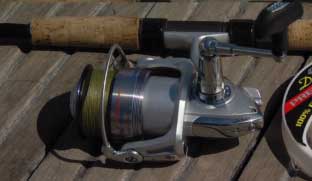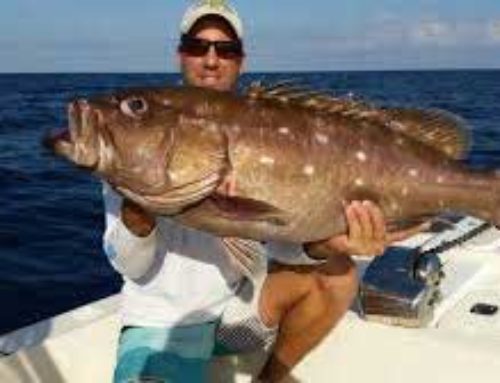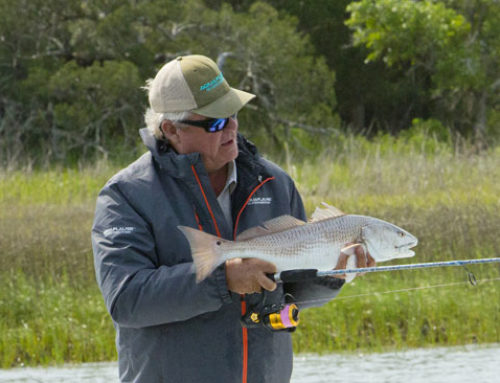Long before you make a cast there are a few things you can do to prevent wind knots. First and foremost, it’s extremely important you select high quality braid. We spool with Diamond Braid exclusively and continue to experience near flawless performance. The latest and greatest braided fishing lines are woven to incredible tolerances, with the latest developments also resulting in increased abrasion resistance and superior strength, greater casting distance and a rounder shape that’s consistent throughout the entire spool. All of these factors contribute to lines that help resist wind knots, but even the latest braiding technology and proprietary coatings won’t protect you completely.
When an angler makes a cast with a spinning reel the weight of the lure or bait pulls line off the spool. Spinning reels are designed with a lip on the spool to help create friction as line peels through the guides. The more line on the reel the less friction there is because the spool lip can’t work as designed to catch the line. Because of this fact it is important you don’t overfill the spool, as this will decrease the friction and make it easier for multiple loops of line to jump off at once. Furthermore, spinning reels with wide arbors create larger loops as line exists the spool and can result in a greater occurrence of wind knots.
Yet another consideration is your rod, and manufacturers have recently developed specialized rod guides that are better suited for fishing with modern braided fishing lines. The first and second guides are the most influential, with Fuji K-Series guides some of the most favored. With an advanced stripper guide that’s designed to shed potential tangles before they occur, Fuji’s K-Series guides greatly reduce wind knots.
Now that you are properly outfitted it’s time to go fishing! After making a cast, most anglers turn the handle to initiate their retrieve and let the bail arm close automatically. With this act the first few turns of the handle won’t have much tension and as a result the line will loosely pack on the spool. As you retrieve your lure you will continue to pack line over the loose loops. If your next cast reaches the loose loops on the spool they will exit the spool unevenly and this is the act that greatly contributes to wind knots.
While this can happen during glassy conditions with barely a breeze, when it is really windy slack line is greater so you must make sure the line isn’t loose before starting your retrieve. Thinner diameter lines are also more susceptible to wind knots since they aren’t as stiff, so if you are having serious issues consider bumping up to a slightly heavier line.
Your leader construction can also have an impact, and it’s important that your knot or swivel is beyond the rod tip before winding up and firing off a cast. If you make a cast and a knot has to pass through multiple guides, you can practically guarantee the line will exit the spool inconsistently. When the knot comes in contact with a guide, even if it passes through, the leader will slow down while the line coming off the spool will still be moving at full speed. If the situation requires a long leader and there is no way to avoid it, tie the slimmest knot possible. No matter the situation always follow through in your casts and point your tip toward the lure to facilitate line coming off the spool as smooth and consistent as possible.
Some scenarios are more prone to wind knots, such as fishing topwater poppers. This technique typically results in loose line packed on the spool as the occasional pop, pause and following retrieve stacks line on the reel inconsistently. Ultra light offerings like weedless soft plastics are also prone to initiate wind knots since they don’t weigh much. When it is time to retrieve your lure there won’t be much pressure and slack line will be the result. The next cast you make will pull off the loose line at once and may form a knot as it passes through the guides in a large cluster.
Truth be told, most wind knots are a direct result of user error. After every cast close the bail arm manually and pull the line tight to help eliminate slack before turning the handle on your reel. Check to make sure a loop of line isn’t resting over the drag knob before completing your retrieve. As the fishing action heats up anglers become more complacent and this is when wind knots often rear their ugly head. Remain vigilant and always make sure line is packing tightly on the spool.
If and when you are confronted with a wind knot there’s not much you can do about it. Most are difficult to untangle, so after picking at it for a few moments it’s often best to cut out the tangled section and start fresh. Tight lines!





